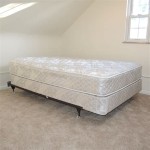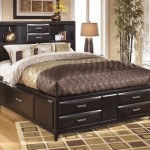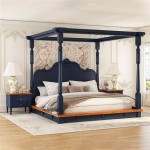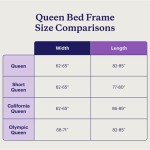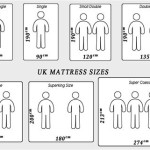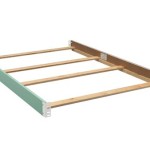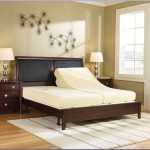Dimension Of Twin Size Bed
The twin size bed is a popular choice for children's rooms, guest rooms, and smaller spaces. Understanding the dimensions of a twin size bed is crucial for planning room layouts, purchasing appropriate bedding, and ensuring a comfortable sleep experience. This article provides a comprehensive overview of the standard dimensions of a twin size bed, along with related considerations such as variations, space planning implications, and bedding requirements.
Standard Dimensions of a Twin Size Bed
The standard dimensions of a twin size bed are typically 38 inches (96.5 cm) wide and 75 inches (190.5 cm) long. These measurements represent the interior dimensions of the bed frame, which will accommodate a standard twin size mattress. It is important to note that these dimensions are generally accepted and considered the industry standard, though slight variations may occur depending on the manufacturer.
The 38-inch width allows sufficient space for a single sleeper without being overly bulky. This width is convenient for smaller bedrooms where maximizing floor space is a priority. The 75-inch length is sufficient for most adults, particularly those of average height. However, taller individuals may find a twin XL bed, discussed later, to be a more comfortable option.
When considering the overall size of the bed, it is essential to factor in the bed frame. Bed frames can add several inches to both the width and length, depending on the style and construction. A simple platform bed frame might add only an inch or two to each dimension, while a bed frame with a headboard and footboard could add significantly more. Therefore, it's crucial to check the external dimensions of the bed frame before making a purchase, especially when space is limited.
Variations in Twin Size Bed Dimensions
While the standard twin size bed has consistent dimensions, several variations exist to accommodate specific needs and preferences. These variations primarily revolve around length and special purposes.
Twin XL Bed: The Twin XL bed is a common variation frequently found in college dormitories and designed for taller individuals. The width remains the same as a standard twin bed, at 38 inches, but the length is extended to 80 inches (203.2 cm). This extra 5 inches of length can make a significant difference in comfort for taller sleepers, preventing their feet from hanging off the end of the bed. Twin XL mattresses and bedding are readily available, making it easy to find appropriate linens.
Daybeds and Trundle Beds: Daybeds often utilize a twin-size mattresses, but their specific dimensions can vary more widely depending on the design. Some daybeds have arms or backs that add to the overall width and length. Trundle beds, which typically slide out from underneath a twin bed, also utilize twin-size mattresses. However, the trundle bed frame must be slightly smaller than the main bed frame to allow for easy storage and retrieval. In these scenarios, carefully measure the specific daybed or trundle bed frame before purchasing a mattress.
Bunk Beds: Bunk beds almost universally use twin mattresses. Safety considerations are paramount when selecting mattresses for bunk beds. The mattress thickness should be carefully chosen so that it does not exceed the safety rail height. Manufacturers often specify the maximum mattress thickness that is safe for a particular bunk bed model. Exceeding that thickness can compromise the effectiveness of the safety rails and increase the risk of falls.
Space Planning and Twin Size Beds
The relatively compact dimensions of a twin size bed make it an ideal choice for smaller bedrooms, guest rooms, and children's rooms. However, effective space planning is still crucial to ensure a comfortable and functional layout. The overall dimensions of the space should be carefully considered when positioning the bed, taking into account other furniture pieces such as dressers, nightstands, desks, and wardrobes. Leave adequate space for walkways and movement around the bed. A minimum of 2-3 feet of clearance on each side of the bed is generally recommended.
In shared bedrooms, such as those for siblings, twin beds can be arranged in several ways to maximize space. Options include placing the beds side-by-side, with a shared nightstand in between, or positioning them at opposite ends of the room. Bunk beds are an excellent solution for saving floor space in shared rooms by vertically stacking two twin beds.
For guest rooms, a twin size bed offers flexibility in accommodating single guests or children. A trundle bed can be utilized when the need arises to accommodate two guests. When the guest room is not in use, the twin bed can serve as a daybed or seating area. This versatility makes a twin size bed a practical choice for guest rooms that serve multiple purposes.
The placement of the bed relative to windows and doors is another important consideration. Avoid placing the bed directly in front of a window, as this can block natural light and create a feeling of confinement. Similarly, avoid placing the bed directly in the pathway of a doorway, as this can disrupt sleep and create a traffic bottleneck. Aim to position the bed against a wall, ideally one that is not shared with a noisy area such as a hallway or bathroom. Proper placement can significantly improve the comfort and usability of the bedroom.
Consider the height of the bed as well. A lower bed frame can create a more open and spacious feel in a small room, while a higher bed frame can provide extra storage space underneath. When selecting a bed frame, carefully weigh the pros and cons of different heights to determine which best suits the specific needs and preferences of the user and the room.
Bedding Considerations for Twin Size Beds
Selecting the correct bedding size is paramount for comfort and aesthetics. Because twin beds have a specific size, it is necessary that linens and other bed coverings are well-matched.
Sheets: Fitted sheets for twin beds are designed to fit mattresses that are 38 inches wide and 75 inches long. The depth of the fitted sheet also matters, particularly for thicker mattresses. Ensure that the sheet has a pocket depth that is sufficient to fully cover the mattress without slipping off. Flat sheets for twin beds are typically around 66 inches wide and 96 inches long. This size provides adequate overhang on both sides of the bed.
Comforters and Duvets: Comforters and duvets for twin beds are typically around 68 inches wide and 86 inches long. These dimensions provide sufficient coverage to keep the sleeper warm and comfortable without being excessively bulky. Duvet covers should be purchased in the same size as the duvet itself. When selecting comforters and duvets, consider the fill material and weight to ensure that it is appropriate for the climate and the sleeper's preferences. Down comforters are warm and lightweight, while synthetic comforters are hypoallergenic and easy to care for. The weight of the comforter or duvet should be chosen based on personal preference and the level of warmth desired.
Pillows: Standard size pillows are commonly used on twin beds. These pillows are typically around 20 inches wide and 26 inches long. One pillow is generally sufficient for a twin bed, but some individuals may prefer to use two pillows for extra support. When selecting pillows, consider the fill material and loft (height) to ensure that it provides adequate support and comfort. Down pillows are soft and moldable, while memory foam pillows provide firm support and contour to the shape of the head and neck. The loft of the pillow should be chosen based on sleeping position. Side sleepers typically require a higher loft pillow for proper spinal alignment, while back and stomach sleepers typically require a lower loft pillow.
Bed Skirts: Bed skirts are optional but can add a decorative touch to a twin bed and conceal the bed frame and any storage underneath. Bed skirts for twin beds are typically 39 inches wide and 75 inches long, with a drop length that varies depending on the height of the bed frame. Choose a bed skirt that complements the overall decor of the room and provides the desired level of coverage.
Understanding the dimensions of a twin size bed, including its variations and related bedding requirements, is essential for making informed decisions when furnishing a bedroom or guest room. Careful planning and consideration of individual needs and preferences will result in a comfortable and functional sleep space.

Twin Bed Size Dimensions Mattress Ing Guide Nectar Sleep

Mattress Sizes Chart And Bed Dimensions Guide Amerisleep

Mattress Size Guide Secrets For Every Room Eachnight

Mattress Size Chart Common Dimensions Of Us Mattresses Choose

Bed Measurements

Twin Xl Mattress And Size Bed Dimensions Eachnight
Mattress Size Chart And Bed Dimensions Guide 2024

Bunk Bed Mattress Sizes And Dimensions Guide 2024 Dreamcloud

Mattress Sizes Chart Bed Dimensions Guide Purple

All Mattress Dimensions King Size Bed Twin

